Detox Your Kitchen for the Healthiest Cooking
Most of us strive to fill our kitchen with the healthiest foods possible for ourselves and our families. But many of us don't stop to think about potential health hazards in our kitchen itself.
Improperly vented gas stoves, Teflon-coated pans and particleboard cabinetry made with formaldehyde-laden glues can emit unhealthy fumes and off-gas toxic chemicals into a kitchen. (Formaldehyde, which is particularly ubiquitous, is a known carcinogen.) Ironically, some of the very products that we use to clean and disinfect our kitchens can add to the chemical soup; drain and oven cleaners are among the most toxic products out there.
The good news: Whether you’re renovating or just looking for better ways to cook, store food and clean, it’s getting easier to create a chemical-free kitchen that enhances your family’s health. You don't necessarily have to spend more money. You just need to know what products to avoid and how to find healthy alternatives.
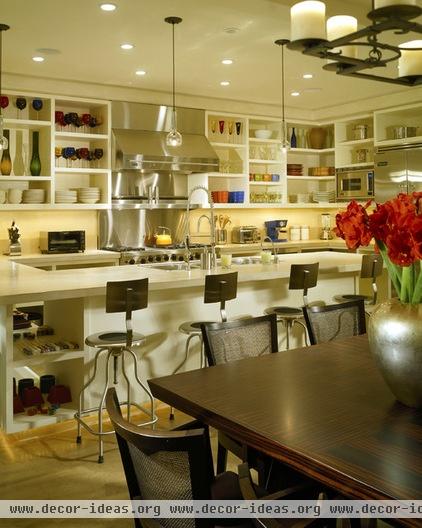
Cabinets
While replacing dated cabinets can be a great way to give your entire kitchen a whole new look, it’s not always necessary. Kitchen cabinets can last for 50 years or more, according to the National Association of Homebuilders.
John Bower, author of The Healthy House, says cabinets can also be one of your home’s most polluting components, because they’re made with plywood, particleboard and MDF, all of which off-gas formaldehyde-laden glue. If your cabinets are at least a couple of years old, these chemicals have likely off-gassed already, so consider sprucing them up with a fresh coat of paint. When you're in the market for new cabinets, ask questions about how they were made so you can avoid bringing formaldehyde into your kitchen.
A few things to consider:
Reclaimed wood cabinets are an environmentally friendly option, but ask about where the wood came from and what is was used for previously. Old wood may have been treated with chemicals you wouldn’t want in your kitchen.Ask about the glue used to bind composite boards, which are almost always used for the cabinet box and sides. Even the more environmentally friendly composites made from natural materials such as wheat and sunflowers can be made with chemical glues. Request that your cabinets be made using low-VOC, formaldehyde-free glues and adhesives.Refinish cabinets with no- or low-VOC water-based paints and stains. Always ask to make sure that your cabinets aren’t finished with melamine, which can cause skin, eye and throat irritation.Storing dishes and pantry items on open shelves makes your kitchen feel more spacious than storing them in cabinets and eliminates the need for cabinet boxes and sides, which are usually made from particleboard. Keeping dishes in sight is also more convenient and forces you to remain organized.
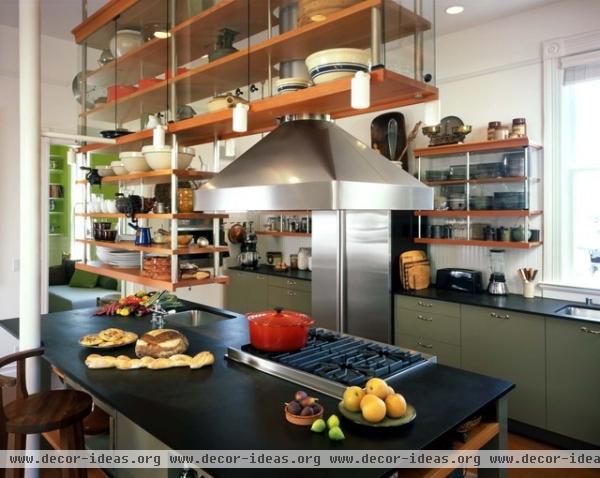
Countertops
Your countertops get intimate with your food, so they should provide a healthy surface for chopping and preparing. A number of environmentally sensitive options have surfaced over the past decade, but some raise indoor-air-quality concerns.
Recycled glass, or terrazzo, is gorgeous but often set in a petroleum-derived epoxy or cement substrate that can off-gas hormone-disrupting phthalates into your kitchen. Granite, a standard in higher-end homes during the past decade, can emit radon.
The good news is, many of the environmentally friendly options on the market today, such as sunflower seed and wheat composite boards, are made using nontoxic, formaldehyde-free adhesives. Ask questions and do your homework before choosing a countertop material.
A few things to consider:
Ask the countertop manufacturer and installer about what kind of epoxy and adhesive the surface is made from and what will be used for installation. Avoid formaldehyde-based glues.
Consider maintenance. Can you clean the surface easily with warm water? Can you oil and polish it with natural, nontoxic products? Look for Greenguard certification, which means the countertop material has been proven to have low chemical emissions.Concrete countertops are popular, and cement made from fly ash (a waste material from the coal-burning industry) is a fine environmental alternative. Researchers are concerned, however, that fly ash concrete can emit radon, a dangerous gas that can cause lung cancer. It’s probably best to save this material for outdoor spaces.Seal stone surfaces using water-based, low-odor Safecoat MexeSeal instead of chemical-laden traditional sealants. Be wary of any sealant that warns you to keep children and pets away while you apply it (most of them do).Suggestions for ecofriendly kitchen countertops
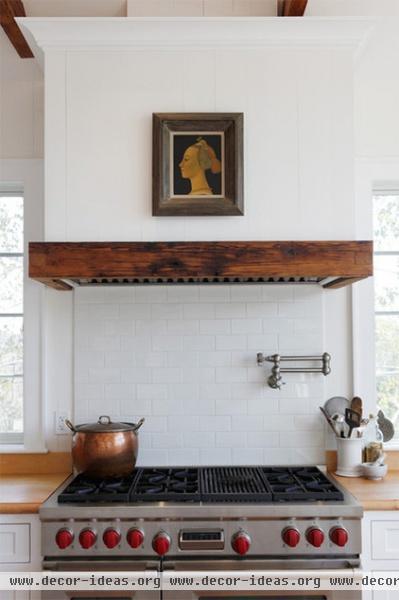
Stoves
Gas stoves are most cooks’ preference because they allow for greater control than electric. But because they produce carbon monoxide, carbon dioxide and nitrogen oxide, gas stoves can be especially troublesome for asthma sufferers.
Alfred Zamm, M.D., author of Why Your House May Endanger Your Health, believes that gas ranges could be a hidden culprit in “housewives’ malaise.” He writes that a gas oven operating at 350 degrees for an hour can cause kitchen air pollution comparable to a heavy Los Angeles smog.
Without a ventilation fan, carbon monoxide and nitrogen dioxide levels can zoom to three or more times that. Carbon monoxide is a toxic gas that can cause headaches, central nervous system damage and depression. Nitrogen dioxide exposure can cause respiratory and lung problems.
Architect Paula Baker-Laporte, who has written several healthy-home books, recommends:
Always run ventilation range hoods to outside the house.Install the largest range hood you can find and specify variable speed control.Adjust flames so that they burn blue. A yellow flame indicates incomplete combustion and carbon monoxide production.
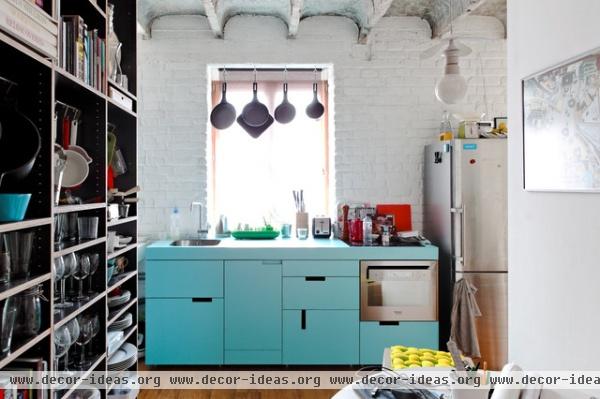
Pots and Pans
One of the easiest and most important decisions you can make in the kitchen is what you use to heat your food. PTFE, a polymer used in nonstick cookware as well as in food packaging, can release potentially hazardous fumes. PFOA, a chemical used in nonstick coatings, is a likely human carcinogen that many companies plan to phase out of their products — but not until 2015. The good news is, these chemicals are easy to avoid or minimize.
A few things to consider:
When seasoned properly, a cast iron skillet works as well as nonstick cookware. To season, coat the pan with vegetable oil and place over high heat until the oil dries.Always cook on the lowest heat possible. The higher the heat, the more chemicals are released.Hand wash pots and pans with nonabrasive cleaners such as castile soap to avoid scratching the nonstick surface, which releases chemicals.Stainless steel is a safer choice than aluminum, which has been linked to neurological problems at higher exposures.
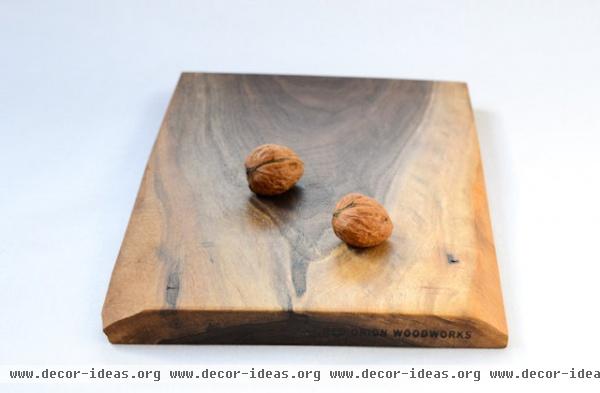
Wood Cutting Board, Natural Edge by Red Onion Woodworks - $69.00 » Cutting Boards
If they’re not washed properly, cutting boards can harbor germs and bacteria. And don’t be fooled by cutting boards that call themselves antibacterial. They don’t protect against food-borne bacteria and are often treated with triclosan, a compound that can irritate skin and eyes and disrupt hormones.
A few things to consider:
Wood or bamboo cutting boards are healthier than petroleum-based plastic or wood composites, which can contain carcinogenic formaldehyde.To prevent contamination, use one cutting board for meat cutting only. After you use it, wash it in hot, soapy water and disinfect it with vinegar.
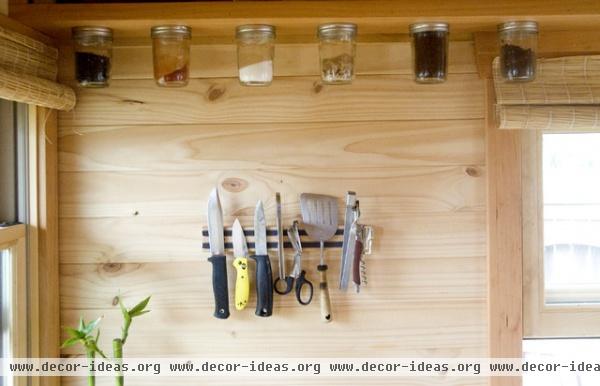
Plastic
Keeping plastic out of your kitchen is one of the healthiest and simplest changes you can make. Polycarbonate plastics can leach BPA, especially when they are heated, are washed and come into contact with fatty, salty and acidic foods.
BPA, a synthetic estrogen, can disrupt the endocrine system and has been linked to a number of health issues, which is why you’re seeing so many “BPA-free” labels these days. Melamine, a hard plastic that is often used to make dinnerware, contains formaldehye.
A few things to consider:
Never heat food in plastic containers. When microwaving leftovers, always transfer them to glass or ceramic dishes.Store food and leftovers in glass containers. Mason jars work great and are more attractive than plastic.
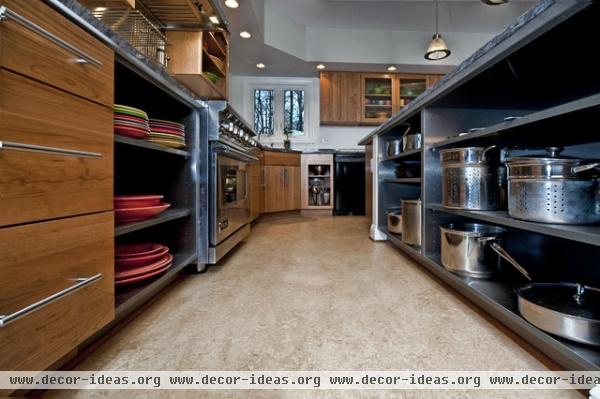
Flooring
As such a large surface, flooring is always important. Because you do so much standing in the kitchen as you prepare food and clean up, a soft and buoyant floor is crucial. Cork and natural linoleum are ideal because they are environmentally friendly, don’t emit chemical fumes and are comfortable underfoot.
A few things to consider:
Naturally resilient linoleum, made from linseed oil, wood flour and natural jute, comes in hundreds of colors, is easy to maintain and can last for decades.Cork, also available in many colors and designs, is a great choice, but shop carefully. Once manufactured exclusively in Spain and Portugal, where cork grows, this flooring is now being made in China, where environmental and health regulations are not as strict. Cheaper cork floors can be made with toxic formaldehyde-based glue. Always ask.Bamboo flooring has also become a popular environmentally friendly choice, but it can also be made using formaldehyde-based binders. Find out where and how it was manufactured.
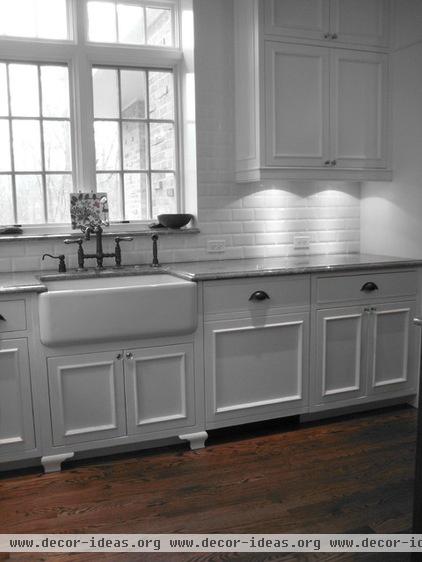
Cleaning Products
Ironically, the chemicals we use to clean and disinfect kitchens are among some of the most toxic products we bring into our homes.
Conventional cleaners contain dangerous solvents, acids and other hazardous chemicals. Drain cleaners and oven cleaners are particularly toxic. Lye, which is used in many drain cleaners, can damage healthy lungs within 15 minutes of use.
Save money — and your health — by developing an arsenal of natural cleaning agents that you probably already have in your cupboards. White vinegar is a natural disinfectant and deodorizer (but don’t use it on marble countertops, as it will etch the surface). Baking soda cleans, deodorizes and scours; lemon juice cuts grease and freshens; and hydrogen peroxide disinfects and whitens.
Ecofriendly cleaning tips:
To clean the oven, make a paste of 3 parts baking soda and 1 part water. Spray the oven with diluted soap and water, then apply the paste and let it sit overnight. In the morning scrape away the paste, then spritz with a mixture of half vinegar and half water.Wipe down the inside of your refrigerator with a vinegar and water spray.Scrub tough stains with a mixture of salt and water.Lemon juice removes grease and tarnish.To clear the drain, pour in ½ cup of baking soda followed by ½ cup of vinegar. Watch the mixture fizz (kids love this!) for 15 minutes, then rinse with hot water. If the clog is too stubborn, try this trick.Scrub stainless steel with club soda or use baking soda and a vinegar rinse.Eschew chemical air fresheners and keep your kitchen smelling fresh by placing a small bowl of vinegar on a high shelf to continuously absorb kitchen odors.Pour baking soda directly over spills when they occur.Never mix vinegar and hydrogen peroxide. That might create peracetic acid, which can irritate skin, eyes and the respiratory system, according to Eco-Cycle.
More: How to design an ecofriendly kitchen












